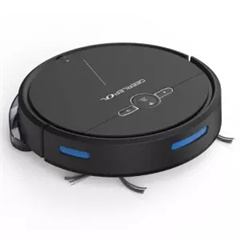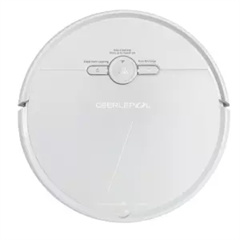While robot vacuums offer convenience and automation in cleaning, they can also raise security and privacy concerns, especially if they are equipped with advanced features such as cameras, mapping capabilities, or internet connectivity. Here are some common security and privacy considerations related to robot vacuums:
- Camera and Privacy: Some robot vacuums have built-in cameras for navigation or mapping purposes. These cameras could potentially capture images or videos of your home. It’s essential to ensure that the vacuum manufacturer has strong privacy policies in place, and you have control over camera usage. Make sure that the camera cannot be activated without your consent.
- Data Security: Robot vacuums with mapping capabilities may store floor plans or data about your home. Ensure that this data is encrypted and securely stored. Be cautious about connecting your robot vacuum to public Wi-Fi networks, as this could potentially expose sensitive information.
- Mobile App Security: The mobile app that controls your robot vacuum should be secure and regularly updated to protect against potential vulnerabilities. Use strong, unique passwords for your app account to prevent unauthorized access.
- Voice Assistants: If your robot vacuum is compatible with voice assistants like Amazon Alexa or Google Assistant, be aware that voice commands issued to these assistants could potentially be stored and analyzed. Review the privacy settings of your voice assistant devices.
- Firmware Updates: Regularly update your robot vacuum’s firmware to ensure that it has the latest security patches. Manufacturers often release updates to address security vulnerabilities.
- Guest Access: If you allow guest access to your robot vacuum’s app, be cautious about the level of control and access guests have. Limit their access to sensitive features and data.
- Remote Monitoring: Some robot vacuum apps allow you to remotely monitor your home through the robot’s camera. Ensure that this feature is disabled when not in use and that only authorized users can access it.
- Third-Party Integrations: If your robot vacuum integrates with other smart home devices or services, review the privacy policies and permissions for those integrations. Make informed choices about what data you share with third-party services.
- Physical Security: Robot vacuums are physical devices that move around your home. Be mindful of any sensitive documents, valuables, or items you do not want to be disturbed or inadvertently captured by the robot’s sensors or cameras.
- User Agreements: Carefully read the terms of service and privacy policies provided by the robot vacuum manufacturer. Ensure you understand how your data will be used and shared.
- Guest Networks: Consider setting up a separate guest network for your smart devices, including your robot vacuum, to isolate them from your main network and protect your personal data.
- Disable Unnecessary Features: If you have concerns about certain features, such as remote monitoring or camera functionality, consider disabling them if they are not essential for your cleaning needs.
By being aware of these security and privacy considerations and taking appropriate precautions, you can enjoy the convenience of a robot vacuum while minimizing potential risks to your privacy and data security. Always stay informed about updates and developments related to your specific robot vacuum model and the associated mobile app.


















